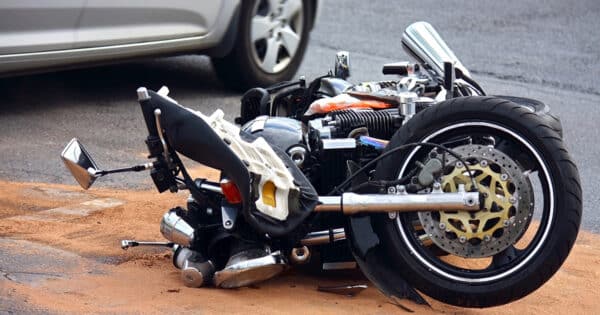The rules for private e-scooters have not changed. It is against the law to use a privately owned e-scooter on the public road or highway. If you use an e-scooter illegally you could be fined, have penalty points on your licence and the e-scooter could be impounded.
Serious injury resulting from an e-scooter collision
I act for a client who as a cyclist sustained a brain injury as a consequence of a crash he was involved in with a third party riding a privately owned e-scooter in London on the public road. My client was cycling lawfully on the road across a traffic light controlled junction when the third party approaching at approximately 25 miles per hour from the opposite direction entered the junction against red traffic lights and collided frontal into my client.
As a result of the collision my client was transferred by Air Ambulance to a Major Trauma Centre in London where he was treated for a brain injury, abdominal injuries, and serious fractures. My client is unlikely to return to any paid work, will require ongoing rehabilitation, and a support worker. He is aged just 31. I have been instructed to act for my client in a personal injury compensation claim against the third party rider of the e-scooter to secure funding for private rehabilitation, interim payments and compensation to meet our client’s needs as a result of the injuries suffered.
The outcome of the court case
The third party was prosecuted for the following offences for which at criminal court he pleaded guilty:-
- Riding an unlicensed e-scooter, on a road, or other public space, without a policy of insurance;
- Riding a mechanically propelled vehicle, namely an unlicensed e-scooter, without due care and attention
The third party was disqualified from driving for 12 months, fined and required to pay court costs. The third party at the criminal sentencing hearing explained that he had not realised that driving a private e-scooter on the public road was unlawful and he was sorry for the life changing injury suffered to our client.
The only e-scooters that currently can be lawfully used on the public road or highway are those that are used as part of the Government approved trials. The Department for Transport has updated (as of 20.12.2022) guidance for use of e-scooters as part of the trial which can be found in full here; https://www.gov.uk/guidance/e-scooter-trials-guidance-for-users .
Key safety issues identified in the Guidance
The updated Guidance states “You should wear a cycle helmet when using an e-scooter. Helmets are recommended but are not a legal requirement”. The words “you should” are perhaps to add extra emphasis given the e-scooter used as part of the trial can travel up to 15.5 miles per hour therefore imagine what might happen to a rider who comes off at that speed (private e-scooters can travel above 15.5 mph as in my client’s case).
The Guidance also states “wear light-coloured or fluorescent clothing so that other road users can see you in daylight, poor light and in the dark” . This is an important point because the third party in my client’s case was wearing dark clothing which afforded my client no chance to see his approach. Had the e-scooter rider in my client’s case instead collided with a lorry, rather than a cyclist, then the outcome for the e-scooter rider might have been much worse.
The Guidance further offers “you should not ride an e-scooter while drunk or otherwise intoxicated – you may be prosecuted under drink or drug driving laws as careless and dangerous driving offences also apply to users of e-scooters” . The e-scooter is not an alternative to driving the car home after a drink – “don’t drink and drive” includes e-scooters!
Reducing the risk for e-scooter use
If we can together recognise that e-scooters have the propensity to cause serious injury then we may consider how that risk can be reduced of which the updated Guidance is a good start by using the approved e-scooters on the road away from pavements, using a helmet to reduce the chance of the e-scooter rider suffering a head injury, and by wearing bright clothing to increase visibility to other road users. I would also go further to suggest a rider may wish to wear protective clothing to reduce the likelihood of abrasions and fractures if they, however caused, came off the e-scooter.
How Moore Barlow can help
Matthew Claxson is a Solicitor and Partner in the Serious Injury Team at Moore Barlow LLP acting on behalf of clients who are seriously injured to access, through an insurance claim, rehabilitation, interim payments and compensation.
Matthew can be contacted on Freephone 0800 157 7611 or by email claim@moorebarlow.com
Find out more about the Personal Injury team and services







